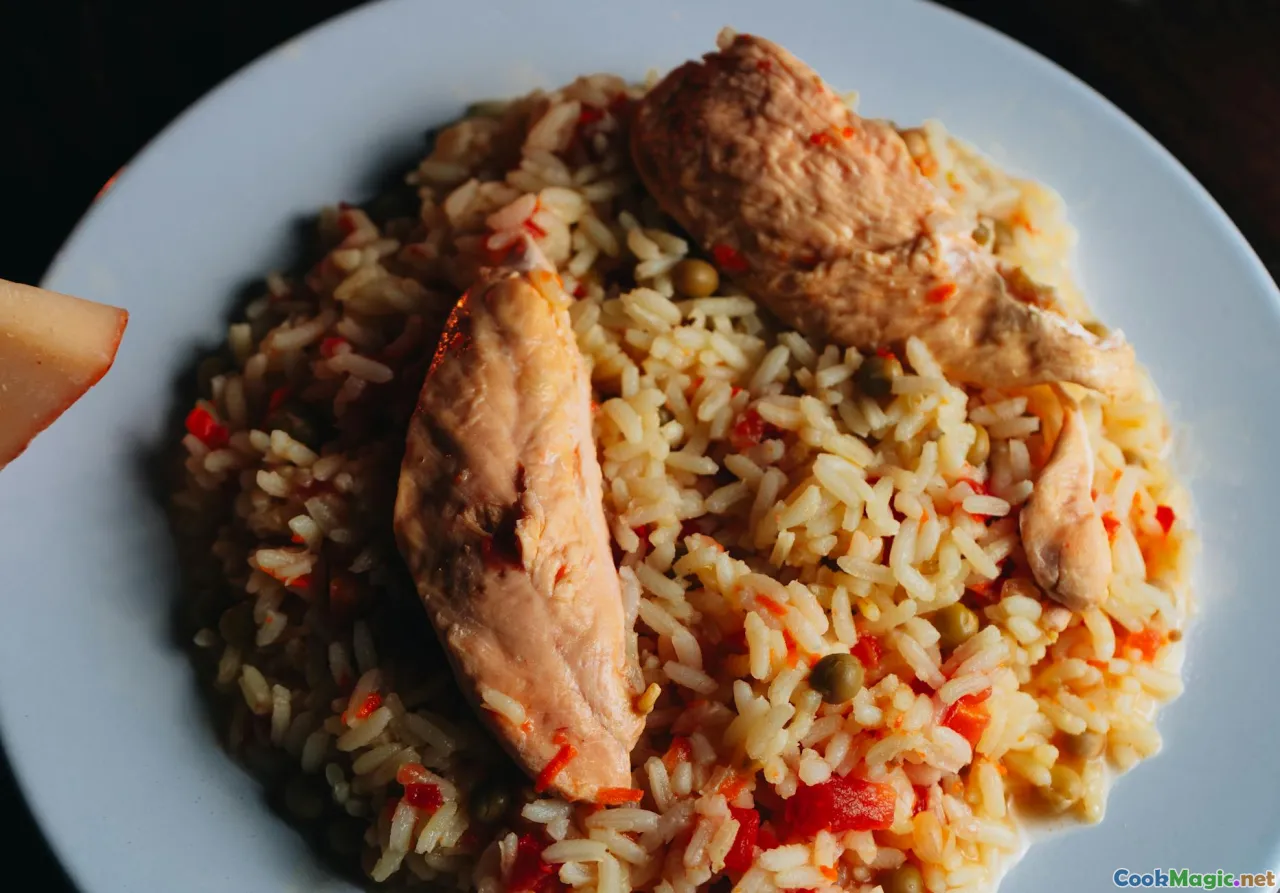Proper Method for Making Cuban Arroz con Pollo
7 min read Discover the authentic method for crafting Cuban Arroz con Pollo, a vibrant, savory dish rich in history, culture, and flavor that captures the soul of Cuba. April 20, 2025 06:00
Proper Method for Making Cuban Arroz con Pollo
Imagine the warm Caribbean sun casting a golden hue over lush fields, where the aroma of saffron, garlic, and smoky chicken wafts through the air. This is the essence of Cuban Arroz con Pollo, a dish that not only feeds the body but also nourishes the soul with its vibrant colors, bold flavors, and deep cultural roots. For many Cubans, this dish is more than just a meal—it's a celebration of family, history, and resilience.
The Cultural Tapestry of Arroz con Pollo
Arroz con Pollo, translating to "rice with chicken," is a staple across Latin America, but Cuba has infused it with unique ingredients and techniques that elevate it to a culinary art form. The dish's origins are intertwined with Spanish, African, and indigenous influences, reflecting Cuba's complex history of colonization, slavery, and migration.
In Cuba, Arroz con Pollo is often reserved for special occasions, Sunday family dinners, or community gatherings. Its bright yellow hue, achieved through the use of saffron or annatto, symbolizes festivity and prosperity. The dish embodies the Cuban spirit—resilient, flavorful, and warmly inviting.
Selecting the Perfect Ingredients
The Chicken
Authentic Cuban Arroz con Pollo calls for bone-in, skin-on chicken thighs or drumsticks. The bones add depth to the broth, while the skin imparts richness and flavor. Freshness is key—preferably organic or free-range chicken for the best taste.
The Rice
Long-grain white rice is traditional, providing a fluffy, non-sticky base that absorbs flavors beautifully. Rinsing the rice until the water runs clear ensures a light, airy texture.
The Seasonings
- Saffron or Annatto (Achiote): For that signature golden color and subtle earthy aroma.
- Garlic and Onion: The aromatic foundation.
- Bell Peppers: Typically green or red, chopped finely.
- Tomato Paste or Fresh Tomatoes: Adds depth and a hint of acidity.
- Herbs: Bay leaves, oregano, and freshly chopped cilantro for freshness.
- Spices: Black pepper, cumin, and a touch of smoked paprika for complexity.
The Vegetables
Peas, olives, and sometimes capers are added for texture, saltiness, and bursts of flavor.
Step-by-Step: Crafting the Authentic Cuban Arroz con Pollo
1. Marinate the Chicken
Begin by marinating the chicken pieces with garlic, oregano, salt, pepper, and a squeeze of lime or vinegar. Let it rest for at least 30 minutes to absorb the flavors.
2. Prepare the Sazón Base
In a large, heavy-bottomed pot or caldero, heat a generous amount of oil over medium heat. Sear the chicken until golden brown on all sides, about 8-10 minutes. Remove and set aside.
3. Sauté Aromatics
In the same pot, add chopped onions, bell peppers, and minced garlic. Sauté until fragrant and translucent—about 5 minutes. Stir in tomato paste or fresh chopped tomatoes and cook for another 5 minutes until the mixture thickens.
4. Toast the Spices
Add cumin, smoked paprika, and a pinch of saffron or annatto powder. Toast briefly to release their aromas. If using saffron threads, steep them in a little warm water first.
5. Build the Broth
Return the chicken to the pot. Add enough water or chicken broth to cover the ingredients. Toss in bay leaves and a sprig of oregano. Bring to a boil, then reduce heat and let it simmer uncovered for about 30 minutes, allowing flavors to meld.
6. Add the Rice
Stir in rinsed long-grain rice, peas, and pitted green olives. Adjust salt and pepper to taste. Cover tightly, reduce heat to low, and simmer gently for 20-25 minutes. Avoid stirring to keep the rice fluffy.
7. Finishing Touches
Once the rice is tender and has absorbed the broth, turn off the heat. Let the dish rest for 5 minutes—a step that helps develop complex flavors.
Tips for Perfecting Your Cuban Arroz con Pollo
- Use Quality Saffron or Annatto: The vibrant color and aroma are essential.
- Don’t Overmix: Let the rice absorb the flavors naturally.
- Cook Low and Slow: Patience ensures tender chicken and fluffy rice.
- Add Fresh Herbs Last: Cilantro added just before serving brightens the dish.
Personal Reflections and Cultural Significance
In my own culinary journey, making authentic Cuban Arroz con Pollo has been a labor of love. The aroma alone transports me to Havana’s bustling streets, where families gather around steaming platters of this beloved dish. Each spoonful offers a symphony of flavors—the earthiness of saffron, the sweetness of peppers, the savory richness of chicken—all harmonized in perfect balance.
This dish embodies more than tradition; it’s a testament to resilience and community. Whether cooked on a weekend or during a festive celebration, Arroz con Pollo serves as a reminder of Cuba’s rich cultural tapestry and the unbreakable spirit of its people.
Final Thoughts
Mastering the proper method for making Cuban Arroz con Pollo unlocks a world of flavors rooted in history and passion. By selecting authentic ingredients, respecting traditional techniques, and pouring love into each step, you can recreate a dish that not only satisfies the palate but also tells a story of cultural pride.
So next time you want to bring a taste of Cuba into your home, remember: patience, quality ingredients, and heart are the secret ingredients to making truly unforgettable Arroz con Pollo.
¡Buen provecho!**









